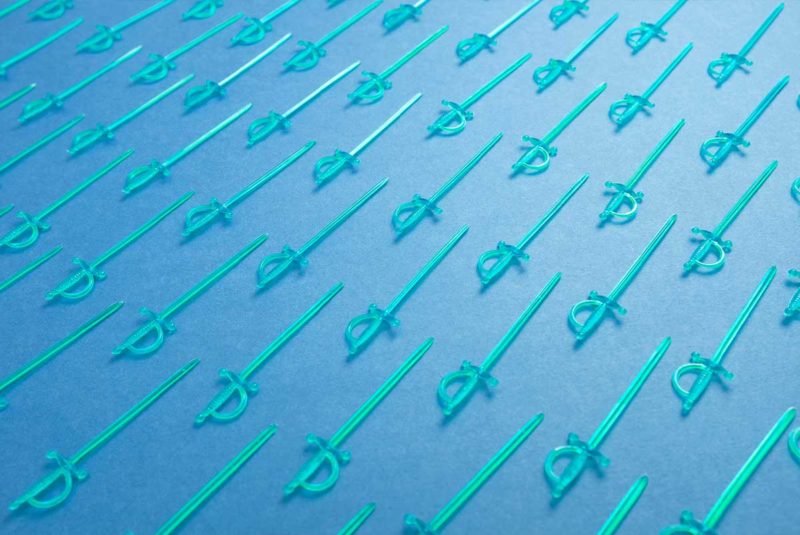Ready To Buy a Home?
Get Approved to Buy a Home
Rocket Mortgage® lets you get to house hunting sooner.
If you’re faced with the prospect of having to pay private mortgage insurance, it’s natural to feel hesitant about an extra cost on top of your monthly mortgage payment, but PMI isn’t good or bad – it’s a tool.
For home buyers, particularly first-time buyers, PMI can be the tool that gets you into a home faster and increases wealth in the long run, especially when interest rates are low.
And here’s some more good news: PMI doesn’t have to last forever. With some strategic planning, PMI can be a blip on the radar screen of your homeownership.
We’ll tell you what PMI is, when it applies and – we can’t forget this part – how to get rid of it.
What Is PMI and Why Do I Need It?
PMI only applies to conventional mortgage loans. Conventional mortgage loans are private mortgages that aren’t backed (read: insured) by the federal government.
PMI insures a mortgage loan if you make a down payment that’s less than 20% of the home’s sale price. It’s paid to a third-party insurance company or, depending on circumstances, directly to a lender.
Not every mortgage lender requires PMI if you make a smaller down payment – but most will.
What Are Common Types of Private Mortgage Insurance?
PMI comes in a few forms, all of which work a little differently.
Borrower-paid PMI (BPMI)
BPMI is the most common type of PMI. With BPMI, borrowers pay an extra monthly fee on top of their monthly mortgage payment until the equity in the home (the amount of your home that you own outright) exceeds 22%.
Once you meet the 22% threshold, lenders are required to automatically cancel your PMI, as long as your mortgage payments are current. It takes the average borrower around 11 years to pay off BPMI.
Single-premium PMI (SPMI)
SPMI is an alternative form of PMI. With SPMI, buyers pay a lump sum at closing rather than make payments every month. Paying off your PMI with a single payment at closing can mean lower monthly mortgage payments – and one less bill to worry about.
Buyers who plan on refinancing or selling their homes relatively quickly may want to think hard before they consider this option because SPMI isn’t refundable. And many borrowers might find it challenging to come up with the cash for SPMI on top of a down payment.
Lender-paid PMI (LPMI)
LPMI is exactly what it sounds like: Your mortgage lender pays the PMI for you. In exchange for paying the upfront cost, the borrower accepts a higher interest rate on their mortgage.
This option can be cheaper than BPMI, which means you may be able to borrow more. However, LPMI isn’t refundable. And no matter how much equity you build up in your home, the higher interest rate will become a permanent fixture of the loan. The only way to eliminate LPMI is to refinance.
Split-premium PMI
Split-premium mortgage insurance is the least common option. It’s a combination of single-premium PMI (SPMI) and borrower-paid PMI (BPMI).
Basically, the borrower pays part of their mortgage insurance with a single, upfront payment at closing, and the rest is rolled into their monthly mortgage payments.
With this option, you get the dual advantage of not paying as much at closing as you would with SPMI, and scoring lower monthly mortgage payments than you would with BPMI.
How Much Does PMI Cost?
If you think PMI might be in your future, you’re probably wondering how much it’ll cost you.
The cost of PMI is based on your loan amount, and it’s usually somewhere between 0.2% – 2% every year.[1] If you borrowed $200,000 for your dream house, PMI would cost you $1,000 – $4,000 a year ($83 – $333 a month).
Loan types and PMI costs
PMI can differ based on the kind of conventional loan you take out.
With a fixed-rate loan, the interest rate is fixed (think: locked in) for the life of the loan. That makes the loan less risky because your monthly mortgage payments are predictable. Because the loan is considered less risky, PMI tends to be lower for fixed-rate loans.
Adjustable-rate mortgages (ARMs) are unpredictable because their interest rates adjust (think: go up or down) based on market interest rates. ARMs start with a low, fixed interest rate for the first 5 – 10 years.
This can help you pay more toward your principal at first and potentially get rid of your PMI sooner, but you’re likely to pay more for PMI because of the risk. Also, after the introductory period, if interest rates go up, you’ll pay more in interest on your loan, which means your monthly payments go up as well.
How your credit impacts PMI costs
Think you fully understand PMI, and this article should be over? Not so fast.
There are a few other elements that factor into PMI, like credit scores and debt-to-income (DTI) ratios.
Your credit score is a three-digit number from 300 – 850 that’s assigned to you by credit reporting agencies. The major agencies are TransUnion®, Experian™ and Equifax®. Your score is based on factors like payment history, credit use, credit history and diversity.
Your debt-to-income ratio calculates how much of your pretax income goes toward paying off your fixed, recurring monthly debt (think: student loans, car notes, credit cards, etc.)
To qualify for a mortgage, you usually need a credit score of at least 620 or higher and a maximum DTI of 50%.[2]
While lower credit scores and higher DTIs won’t make buying a home impossible, it can make it more expensive. You may end up paying higher interest rates and your lender may charge you a higher rate for PMI.
How to calculate PMI
Knowing how to calculate PMI can give you a leg up on figuring out your borrowing options.
Let’s say you buy a $220,000 home with a 30-year fixed-rate mortgage. You put down $20,000 (about 9%) leaving you with a $200,000 mortgage at 3% interest.
You’ll probably have to pay PMI because the down payment was less than 20%. If you have good credit, your PMI may only cost you 0.5% of the loan value. That means you’ll pay $83.33 in PMI in addition to your $843 monthly mortgage payment for a total of $926.33.
However, if your credit isn’t as good and you pay 1.5% of the loan value in PMI, you could be paying $249.99 in PMI in addition to your $843 mortgage payment for a total of $1,092.99 each month.
When Can You Stop Paying PMI?
You can bid farewell to PMI by getting to 78% of your loan-to-value (LTV) ratio (your mortgage loan divided by your home’s value). If your LTV is 78%, that means you have 22% equity in your home.
The simplest way to get to 78% LTV is to make your mortgage payments in full and on time. Depending on the size of your down payment and your loan terms, this can take between 2 – 11 years. However, there are other ways to end your PMI faster.
End PMI faster
PMI doesn’t have to last forever. These money strategies can help you wave goodbye to PMI:
- Make extra payments: Paying extra toward your mortgage balance each month or year can lower your LTV faster, reducing the time it takes you to reach that magical 78% threshold.
- Refinance: When you refinance, you swap out your existing loan for a new loan (aka repositioning your mortgage). If your home equity is more than 20% when you refinance, it’s bye-bye PMI.
- Get a property appraisal: If the property values in your area are going up, get a professional to appraise and confirm that your property’s value has gone up, too. It can improve your LTV and help you get rid of PMI faster.
Cancel PMI on a multiunit property
If you own a multiunit property, like a duplex or apartment building, getting rid of PMI can get a little complicated, and LTV ratios play a bigger role. Fannie Mae requires an LTV of 70% to cancel PMI, while Freddie Mac requires an LTV of 65%. Know your lender’s terms before committing.
How Can I Avoid Paying PMI?
Because you can’t wave a wand and make it go away, here’s what you can do to avoid PMI:
- Save for a 20% down payment or rethink your price range: This is a well-established, tried-and-tested way to avoid paying PMI. If you can wait and save to make a 20% down payment, you’ll never have to think about PMI. Finding a house in a more affordable price range might be the thing that helps you reach that 20% threshold.
- Request lender-paid PMI: When your lender pays PMI for you, it can be a big money saver upfront, but it will result in a higher mortgage interest rate, which can only be eliminated by refinancing.
Government loans don’t charge PMI – but they still cost you
Some buyers think that they can avoid mortgage insurance by getting a government-backed loan. But that isn’t the case.
- Federal Housing Administration (FHA) loans: FHA loan borrowers pay mortgage insurance premiums (MIPs). They’re required to pay an upfront MIP that’s 1.75% of the loan amount at closing and an annual MIP ranging from 0.45% – 1.05% of the loan.[3]
MIP comes with higher upfront costs and you need to pay it for a set time ranging from 11 years to the life of the loan. PMI doesn’t have a fixed time frame but tends to have higher annual costs.
- Department of Veterans Affairs (VA) loans: VA loans require an upfront funding fee ranging from 1.4% – 3.6% of the loan amount.[4]
- U.S. Department of Agriculture (USDA) loans: A USDA loan requires an upfront payment of 1% and an annual fee that is 0.35% of the loan’s value.[5]
PMI Is One Way To Get Into Your Dream Home Faster
You shouldn’t have to feel like a home is out of reach because you can’t make a 20% down payment. Private mortgage insurance can be the key that unlocks the front door of your dream home.
Get approved to buy a home.
Rocket Mortgage® lets you get to house hunting sooner.
The Short Version
- Home buyers are often required to pay for private mortgage insurance (PMI) when they make less than a 20% down payment
- PMI helps home buyers get into their dream homes without having to make a 20% down payment
- The average monthly cost of PMI depends on the size of your loan. Most borrowers pay around $20 – $200 a month for every $100,000 borrowed[1]
Experian™. “How Much Does Private Mortgage Insurance (PMI) Cost?” Retrieved December 2021 from https://www.experian.com/blogs/ask-experian/how-much-does-private-mortgage-insurance-pmi-cost/
Fannie Mae. “B3-6-02, Debt-to-Income Ratios (02/05/2020).” Retrieved January 2022 from https://selling-guide.fanniemae.com/Selling-Guide/Origination-thru-Closing/Subpart-B3-Underwriting-Borrowers/Chapter-B3-6-Liability-Assessment/1032992131/B3-6-02-Debt-to-Income-Ratios-02-05-2020.htm#DTI.20Ratios
U.S. Department of Housing and Urban Development. “APPENDIX 1.0 – MORTGAGE INSURANCE PREMIUMS.” Retrieved December 2021 from https://www.hud.gov/sites/documents/15-01MLATCH.PDF
U.S. Department of Veterans Affairs. “VA funding fee and loan closing costs.” Retrieved December 2021 from https://www.va.gov/housing-assistance/home-loans/funding-fee-and-closing-costs/
USDA Rural Department. “USDA Rural Development Reducing Fees Make Home Loans More Affordable.” Retrieved December 2021 from https://www.rd.usda.gov/newsroom/news-release/usda-rural-development-reducing-fees-make-home-loans-more-affordable




